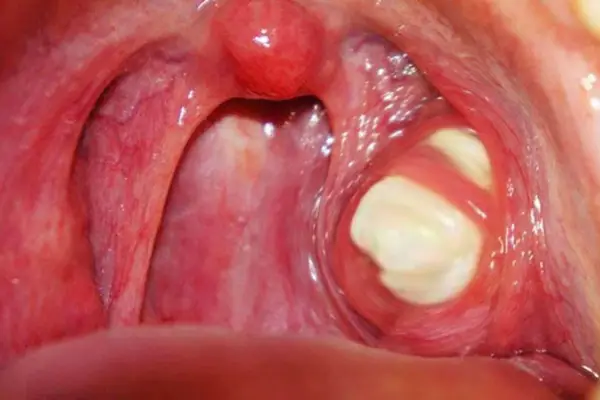Two things are unavoidable in life, swallowing your mouthwash and growing older. So, do not panic. Even the manufacturers are aware that a slip-up is probable with liquids in the mouth.
Accidentally swallowing a mouthful of Betadine Gargle is not considered harmful because its active ingredient, povidone-iodine is highly diluted to a very low concentration. However, you might have a mild gastrointestinal upset but the risk of iodine toxicity increases if a significant quantity of this gargle is gulped.
Once this gargle is swallowed, you can ingest milk or water to dilute it further and call the poison control center at 1-800-222-1222 if you have any related concerns or start noticing symptoms. Make sure to heed the instructions on the label and a golden tip of mine, make sure your head is not raised during the gargle to prevent inadvertent swallowing of this liquid.
What Is Betadine Gargle Made Up Of?
Active Ingredient: Povidone-iodine 0.5% (equivalent to 0.05% available iodine). Povidone-iodine is a broad-spectrum antiseptic that’s effective against a variety of pathogens including bacteria, viruses, fungi, and protozoa.
Inactive Ingredients: The formulation also contains glycerin, citric acid, flavor, sodium hydroxide, propylene glycol, purified water, and saccharin sodium. These components are primarily used to improve the product’s texture, taste, and stability.
Is Povidone Iodine In Betadine Gargle Toxic If Ingested?
Povidone-iodine, the active ingredient in Betadine gargle, is at a 0.5% concentration, which is safe and poses a minimal risk when ingested in small amounts, which is typical of accidental swallowing. Besides, the traces of the gargle remain in the mouth after spitting out.
Like in the use of any mouthwash, cases of inadvertent swallowing are inevitable, as a result, Betadine gargle has undergone several tests to ensure its safety before mass production. Regardless, the use case of Betadine Gargle, as the name implies, involves gargling and not swallowing.
It’s important to know that when povidone-iodine is ingested in large quantities, the risk of toxicity increases significantly. Ingestion of povidone-iodine can lead to various symptoms and health concerns due to the iodine content. Initial symptoms of toxicity may include stomach upset. leading to discomfort, pain, nausea, vomiting, or diarrhea. The gastrointestinal tract may also suffer burns due to the antiseptic nature of povidone-iodine.
More serious complications can arise from the systemic absorption of excessive iodine, leading to thyroid dysfunction. The thyroid gland uses iodine to produce thyroid hormones, and an overload of iodine can disrupt this delicate balance, potentially causing either hyperthyroidism or hypothyroidism. This disruption can have widespread effects on metabolism, energy levels, and overall bodily functions.
In severe cases of povidone-iodine ingestion and toxicity, acute kidney injury (AKI) can occur, often accompanied by metabolic acidosis, increased osmolality, and sodium levels. The kidneys are responsible for filtering and excreting excess iodine and may become overwhelmed if their clearance capacity is exceeded.
Given these potential risks, it’s important to use Betadine Gargle strictly as directed, avoiding swallowing the solution. In the event of accidental ingestion, particularly of a significant amount, seeking immediate medical attention is crucial to manage any adverse effects promptly.
Are Inactive Ingredients In Betadine Gargle A Concern?
The inactive ingredients in the Betadine gargle are generally recognized as safe for ingestion in the small amounts found in the gargle. These ingredients are commonly used in various food and pharmaceutical products and are unlikely to pose a significant health risk when accidentally swallowed in the quantities present in a mouthful of gargle.
However, ingestion in significant amounts can cause gastrointestinal upset or other symptoms depending on individual sensitivity or the quantity consumed. The main issue of concern is the active ingredient, povidone-iodine which still is present in a very low concentration in Betadine Gargle.
What To Do If You Swallow Betadine Gargle
If you accidentally swallow Betadine Gargle, it’s important to act promptly and follow these steps to ensure your safety:
At-Home Care
Small amounts of swallowed Betadine Gargle, due to its low concentration of povidone-iodine, are unlikely to cause severe problems in most individuals. However, reactions can vary based on the amount ingested and individual sensitivity.
To dilute the concentration of the solution that has been ingested, drink a few glasses of milk or water. This can help minimize irritation in the stomach and reduce the risk of gastrointestinal distress.
Unless specifically advised by a medical professional, do not attempt to induce vomiting. This can sometimes cause more harm or exacerbate any potential damage to the esophagus and throat.
Gather Necessary Information
Try to determine how much of the solution was ingested. Knowing the approximate amount can be crucial for medical professionals to provide accurate advice.
Keep track of any symptoms that might arise after swallowing the gargle, such as stomach pain, nausea, vomiting, or any signs of allergic reaction.
Have the Betadine Gargle bottle handy or note down the product’s name and concentration of active ingredients, as this information will be useful for medical advice. The age of the patient is also important.
Call Poison Control
Reach out to your local poison control center or emergency medical services as soon as possible.
In the United States, the national Poison Help hotline, which connects you to your local poison control center, is 1-800-222-1222. This number is available 24 hours a day, 7 days a week, and provides free, confidential help from poison experts. You can call them even if it’s not an emergency.
Provide them with the gathered information (amount ingested, symptoms, product details, and patient’s age).
The poison control center or medical professionals will give you specific advice based on the situation. Their guidance might include seeking immediate medical attention or continuing to observe for any emerging symptoms at home.
Even after taking these initial steps and calling poison control, continue to monitor for any developing or worsening symptoms.
If advised by poison control or if severe symptoms develop, go to the nearest emergency room or healthcare facility. Bring the product with you if possible.
How To Safely Use Betadine Antiseptic Gargle
To ensure safe and effective use of Betadine Antiseptic Gargle, follow these guidelines:
Read the Label
Carefully read and follow all instructions provided on the product label or packaging. Pay special attention to the recommended dosage and frequency of use.
Take note of any specific precautions or warnings indicated on the label.
Preparation
Some formulations of Betadine Gargle may need to be diluted with water before use. Check the label to see if this step is necessary for your specific product.
If the product requires dilution, use the exact amount of water recommended for mixing to ensure the correct concentration.
Gargling Procedure
Use the amount of gargle specified on the product label or as directed by a healthcare professional.
Tilt your head back and gargle the solution in your throat and mouth for the duration specified on the label, usually around 30 seconds.
Do not swallow the gargle. Spit it out into the sink after gargling.
Frequency of Use
Use the gargle as often as recommended on the product label or by a healthcare provider. Do not exceed the suggested frequency of use.
Storage
Keep the bottle in a cool, dry place away from direct sunlight and out of reach of children.
Precautions
Do Not Swallow: Remember, Betadine Antiseptic Gargle is for oral use only and should not be swallowed. It’s meant to be spit out after gargling.
Check For Allergies: Avoid using the product if you are allergic to povidone-iodine or any other ingredient in the gargle.
Pregnancy And Breastfeeding: Consult a healthcare provider before using if you are pregnant, planning to become pregnant, or breastfeeding, due to the iodine content.
After Use
Be aware of any adverse reactions after use, such as skin rash, irritation, or allergic reactions, and seek medical advice if any such symptoms occur.
Sources:
https://pubmed.ncbi.nlm.nih.gov/33229779/
https://betadine.com/sore-throat
https://www.poison.org/articles/povidone-iodine-safe-use-of-a-common-antiseptic-193





